Grass Seeds
Every year, many animals are presented to their vet due to problems caused by the humble grass seed.
Warm, wet, spring-time conditions are perfect for grass growing and can soon turn to an increase in grass seed problems when the grasses seed and dry out in summer.
The grass seeds or ‘awns’ come in a variety of shapes and sizes, but one of the most common ones to cause trouble is the seed from Barley Grass, which has a firm, sharp tip, and awns that fan out into a wedge. The sharp tip makes it perfect for piercing through skin, and the fanned awns mean the seed can only move forward, not backwards – similar to the action of the tip of a fish hook.
Where do grass seed problems occur?
Eyes
Grass seeds in your dog’s eyes can sometimes be tricky to see as they can get themselves tucked deep in the ‘pocket’ between the eyelid and the eye itself, or behind the dog’s third eyelid. If you find your greyhound squinting, or rubbing at its eye, it may be that a grass seed is the culprit. Have a look at the eye in good light, and gently open the eyelids.
If you can see a grass seed, sometimes you can gently grasp it with your fingers or roll it out gently using the dog’s eyelids. If you can’t see anything, but the dog is still bothered by the eye, then have it checked urgently by your vet. The seeds (and other foreign matter) can act like a rasp on the dog’s cornea and can carry bacteria. Ulcers and conjunctivitis can easily develop as a consequence of a grass seed getting lodged and can lead to further damage to the eye, or in severe cases, loss of the eye all together.
Even if you successfully remove a seed from your dog’s eye, your dog’s eye should be checked by a vet to make sure the seed has not caused any damage.
Ears
Grass seeds in the ear usually cause dogs to shake their head or paw at their ear as the sharp bits of the seed tickle and hurt the lining of the ear canal. Occasionally the shaking will be successful in dislodging the seed, but in most cases the seed (or seeds) will have to be removed by your vet with a special instrument that reaches safely into the ear canal.
If untreated, it is possible for an ear infection to develop, or for the seed to pierce through the ear drum and enter the middle ear (which can be very serious, not to mention painful). As a secondary problem, sometimes the violence of the head shaking can lead to damage to the blood vessels in the soft ear flap, and the dog’s ear flap may swell up into a huge blood blister (called an ‘Aural Haematoma’). This can happen quite quickly and the haematoma may then need to be drained and treated by your vet.
Toes and feet
One of the most common problems vets see is grass seed lodging in a dog’s foot. This is a bigger problem for breeds with a lot of hair between their toes, but can it affect any breed, including greyhounds. It occurs when a dog stands on the seed, and it gets caught on the underside of the foot or in between the toes. If not noticed or removed, the seed can work its way through the skin, and start travelling in the space between the tendons and ligaments (remember the shape of the seed means it can only travel forwards not backwards). The grass seed irritates the body, and often drags soil and bacteria in with it as it enters the body – setting things up for an infection. Often the first thing the owner notices is a swelling, usually just above where the toes join at the top of the foot, or a ‘weeping’ hole that the dog continually licks and chews. The dog may be lame, and if the infection is severe, may show all the signs of being unwell or having a fever.
This issue causes a real problem for the vet because the only solution is to remove the seed, which isn’t easy. Sometimes, with a co-operative patient this can be done during the vet visit, but some dogs require sedation so that the vet can probe for the seed. Simply treating the dog with antibiotics will reduce the infection, but the swelling and infection will return again if the seed is still there. The dilemma for the vet is that the seed may have already come out when the abscess burst, but there is no way of telling just by looking. Sometimes the vet will not find a seed despite probing the wound, but if the problem recurs at the exact same site within a few weeks it suggests that the original seed may still be there.
Luckily most grass seeds simply enter from underneath the foot and burst out of the top of the foot, but some seeds have been known to track up the leg over time causing repeated swelling and infection at sites up the leg.
Inhalation & Ingestion
It is also possible for dogs to either inhale a grass seed – especially when running through long grass – or to ingest it accidentally whilst chewing or licking their coats, or when eating food directly off the ground. Grass seeds that get into the lung or airways pose a particularly sinister risk as they are impossible to detect, and signs develop late in the course of the infection. The dog may be fine, then suddenly develop signs of a chest infection, pneumonia or collapsed lung with no history of any other upper respiratory problems. All the vet can see is the infection and damage to the lungs, and it is possible for the dog to die before the real cause of the problem is detected.
Grass seeds that end up in the stomach are generally digested by the body, but it is possible for seed to pierce through the digestive tract into the surrounding tissues and organs before digestion occurs. These seeds can end up anywhere, and signs and symptoms will depend on where they cause damage or infection.
What can I do?
The best way to protect your dog from grass seeds is to be particularly vigilant during the months when they pose the greatest risk – usually from late spring to the end of summer. Keeping grass and weeds under control at home with a combination of mowing and removal can reduce the number of seeds that the dog is exposed to.
Avoid long grass when out walking your greyhound, which shouldn’t be hard to do given they have to be on a leash in public anyway. If you visit a private ‘off-leash’ area with your greyhounds, make sure there’s no long grass in the area.
Finally, when you get home from a walk, check your greyhound all over for seeds and remove them so they don’t become a problem. You need to check in between the toes, under the feet, and in all the ‘crevices’ – under the tail, under the collar and so on – where a grass seed might get trapped.
If your dog is shaking its head more than once or twice, or if they are chewing, licking or rubbing at a particular area, do a thorough inspection straight away. If you are not sure, contact your vet for advice – often a quick visit to the vet at the start of a problem can save you a lot of money in the long run.
Meet our dogs ready for adoption
All greyhounds adopted from GAP are de-sexed, vaccinated, microchipped, wormed and health checked.
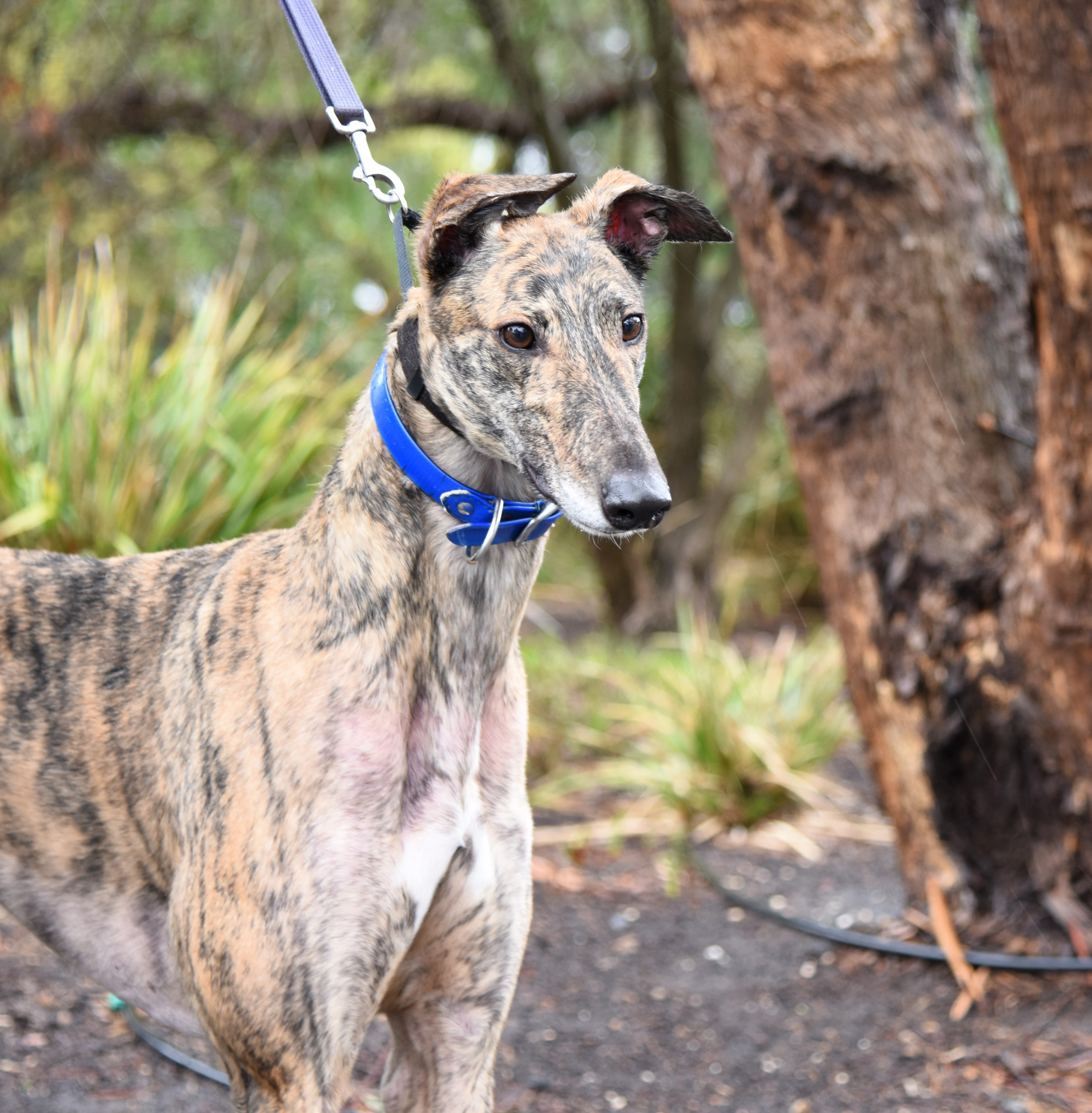
Harris
Talk about a big softie! This lovely boy is such a sweetheart, he leans into you pats and looks up to you with his big eyes. He can be a little shy in new environments but soon bounces back to his joyful self! We think he may suit many households as long as there is a nice yard for him to relax and explore in.

Bobby
Bobby is a lovely young man, just look at his beautiful light-coloured eyes, they seem to stare into your soul. Bobby is a social, friendly and affectionate boy who is keen to move into his furever home. He may suit living with or without a canine pal of similar size and children aged 10years and older.

Bertha
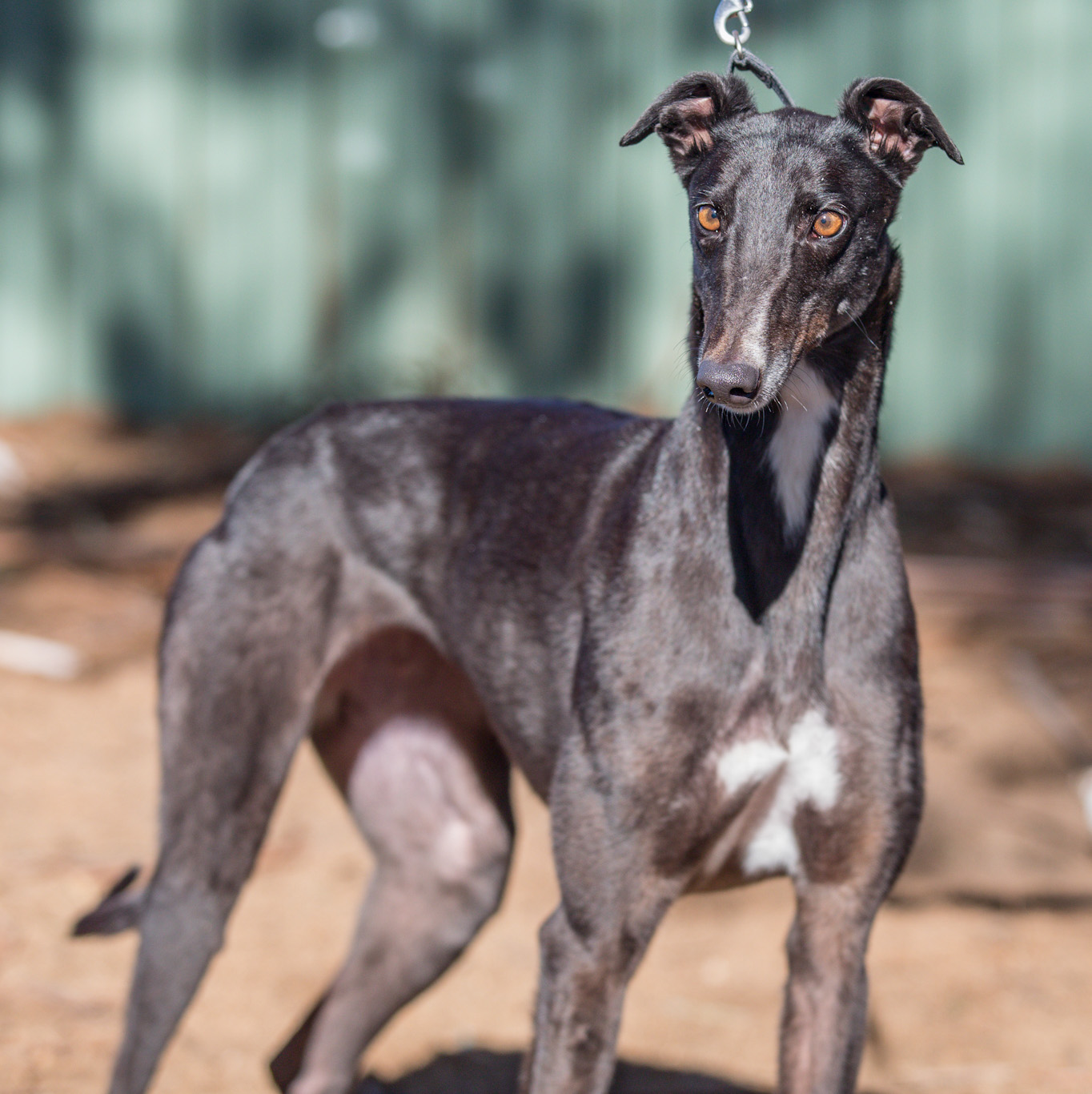
Boston
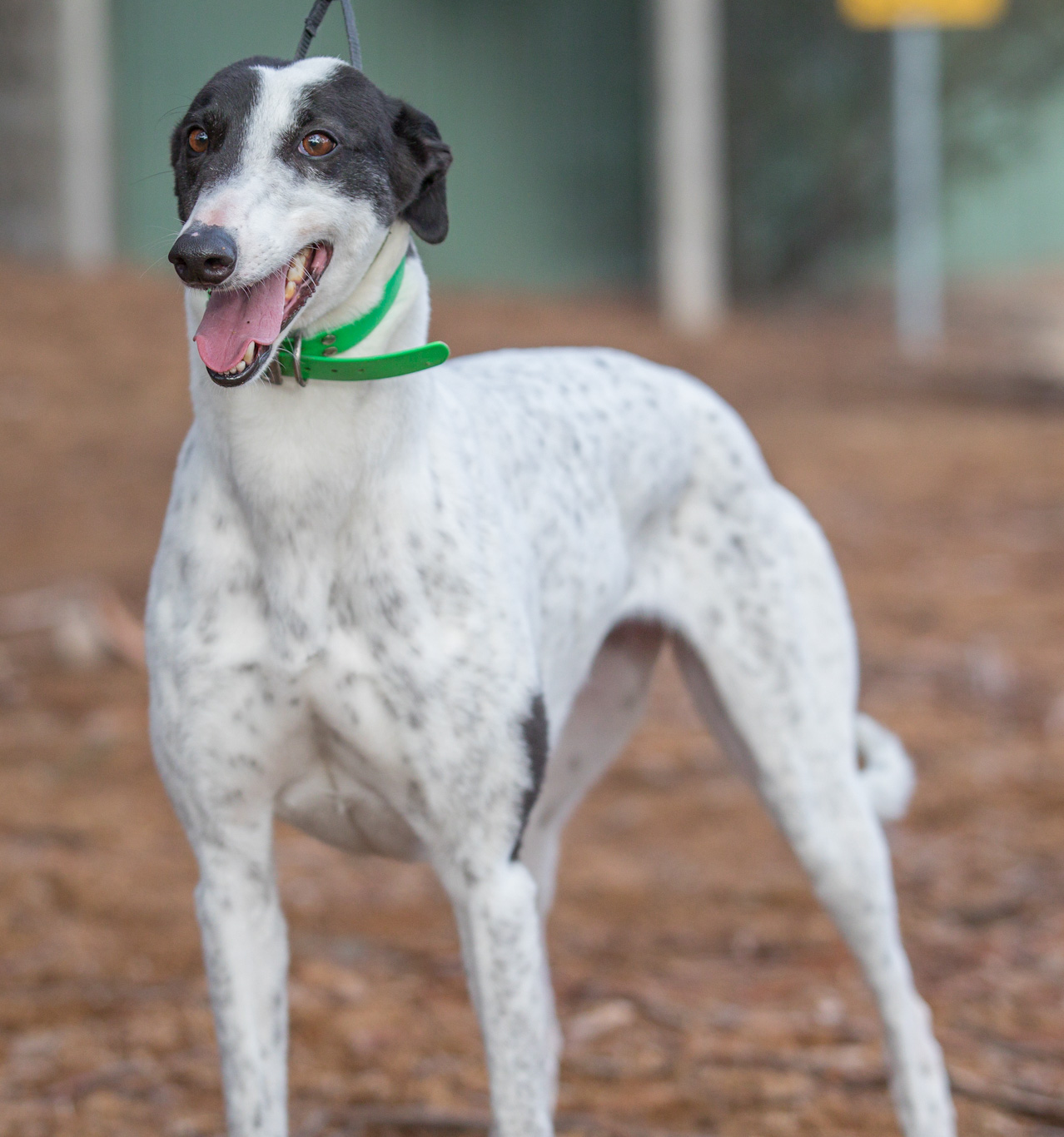
Willow ARP

Diesel
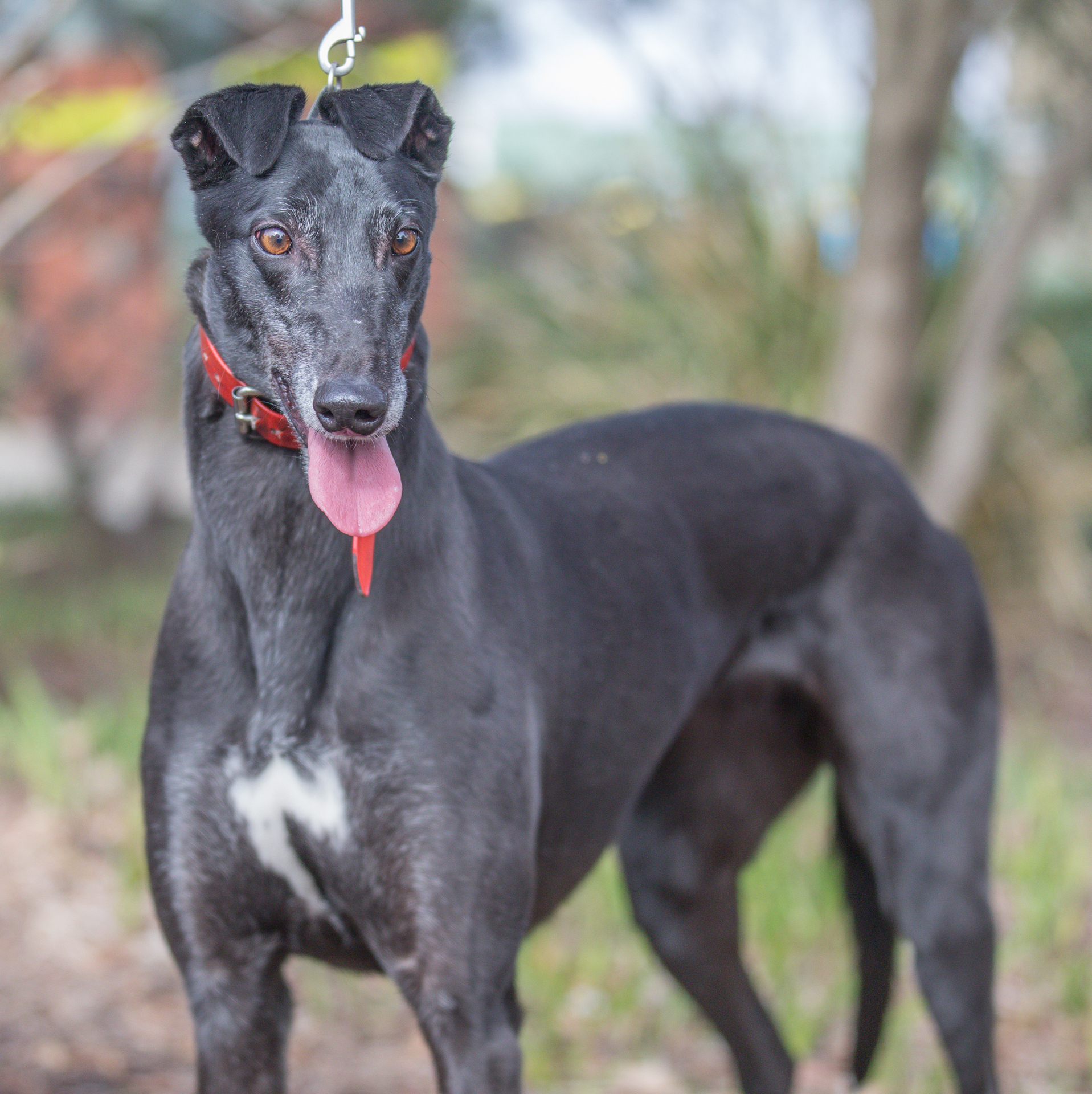
Shiny
Meet Shiny, the sparkling gem of a greyhound who's sure to brighten up your life! This quiet and gentle soul is a sweet and affectionate girl who loves people and adores treats. Shiny's a laid-back companion who'll fit right into your daily routine, bringing joy and calm to your home. Shiny may be suited to a household with kids aged 5+ and for a home with either no other dogs or a male canine companion that gets along with her gentle nature. She also might be a great fit for elderly owners or apartment living,as she's low-maintenance and doesn't require a lot of space. And, surprisingly, Shiny might even live harmoniously with a cat! If you're ready for a loving and gentle companion, Shiny might be the perfect fit for your family.
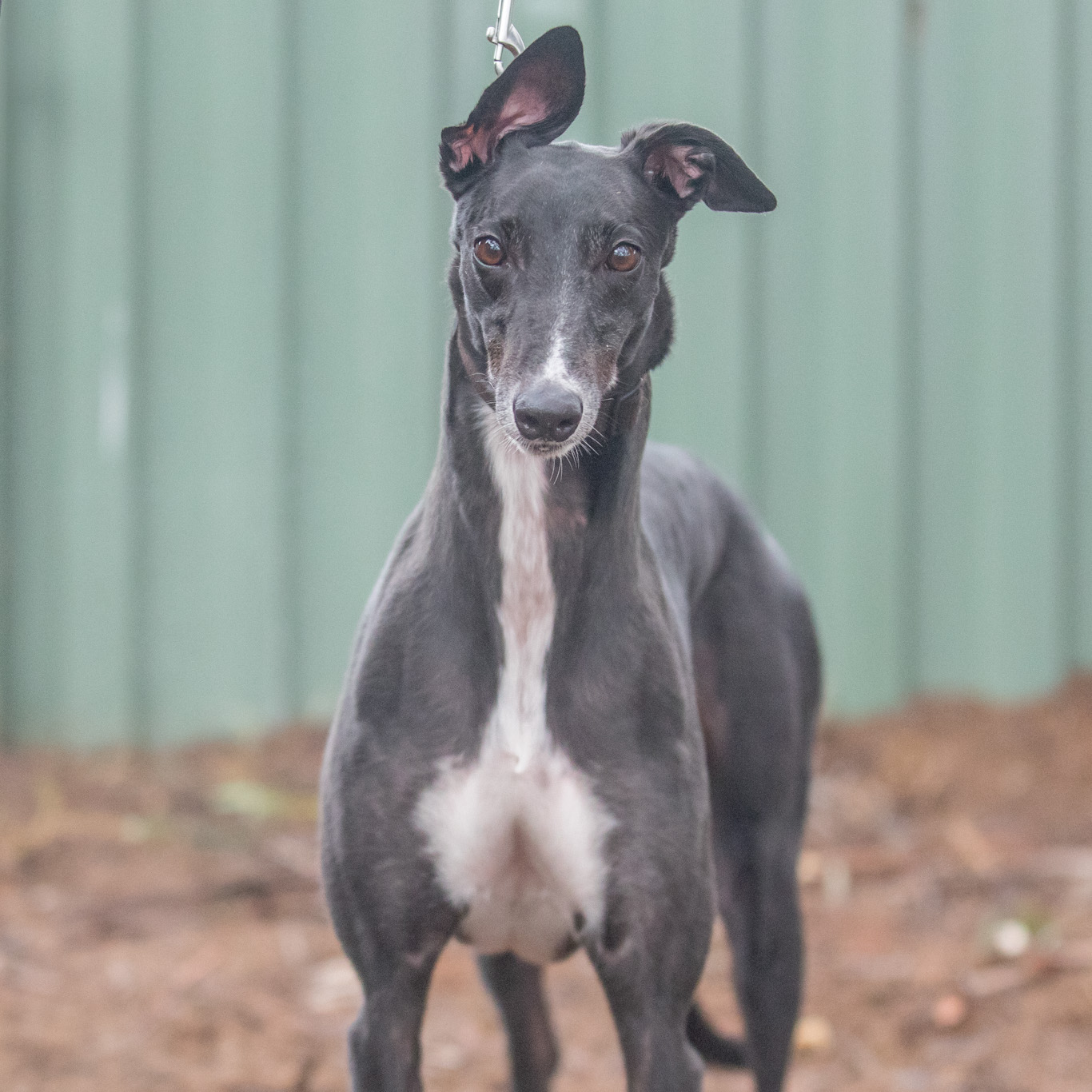
Trixie
Trixie is full of tricks! Well not yet but we know she is a smart cookie that will pick up on things very quickly, maybe even get up to some mischief if she catches you napping on the job of Greyhound Servant! We think this beautiful, affectionate and sweet little girl may be ok for families with children 10 and over and another male canine companion of any size, she may even suit living with a feline friend! Go Trixie!
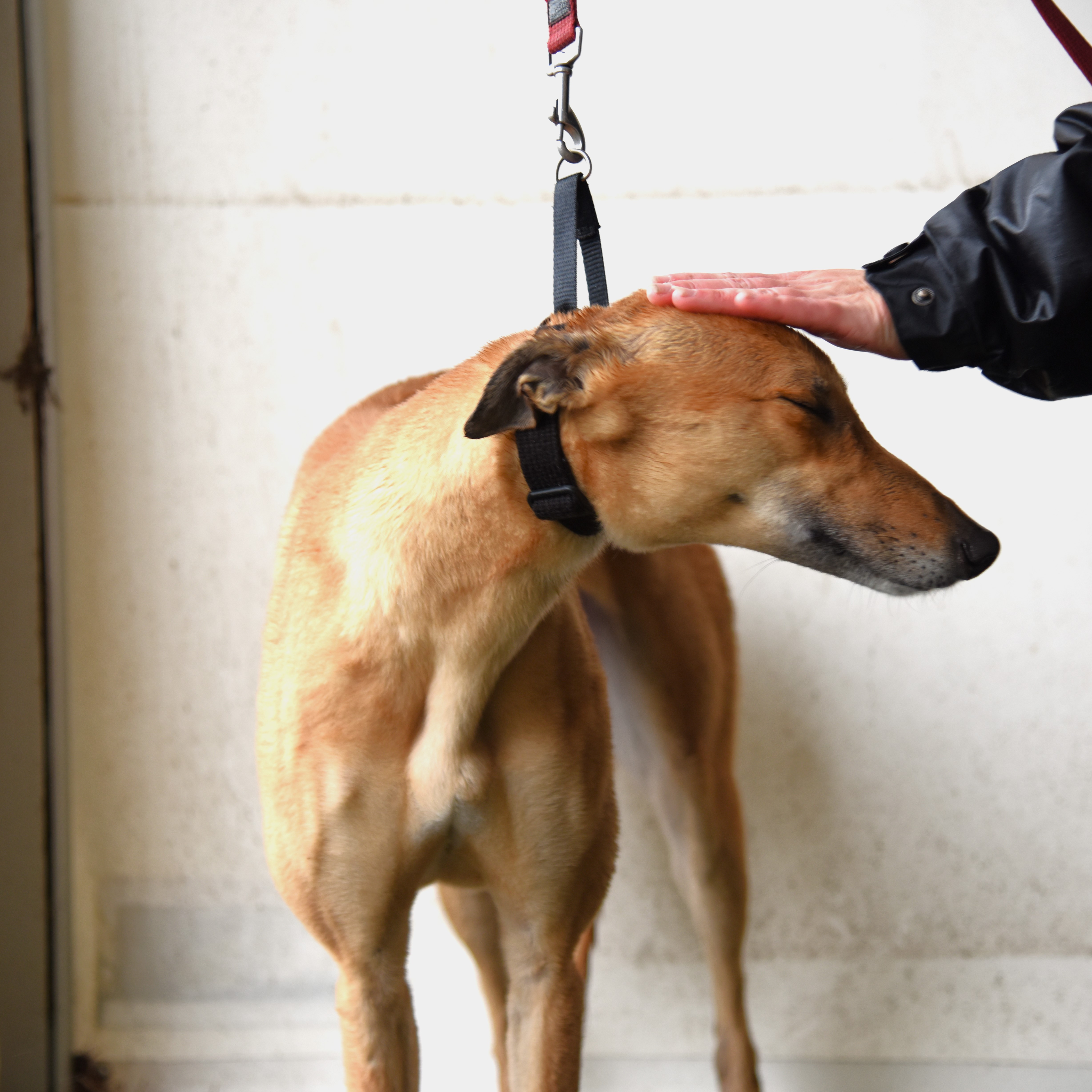
Ravioli
This delicious girl has her eyeliner on and is ready to hit the streets and show off her glamourous looks! Maybe even stopping for a bite to eat at your favourite Italian spot! Miss Ravioli is not only beautiful, she is sweet, kind and affectionate. She can be a little reserved at first but soon warms up and leans in for a cuddle. We think she may suit living with children10 and over and maybe even another medium or larger male canine for company. We also think she would be best off in a home that has a yard as she is still only young and can take her time to adjust to new environments.
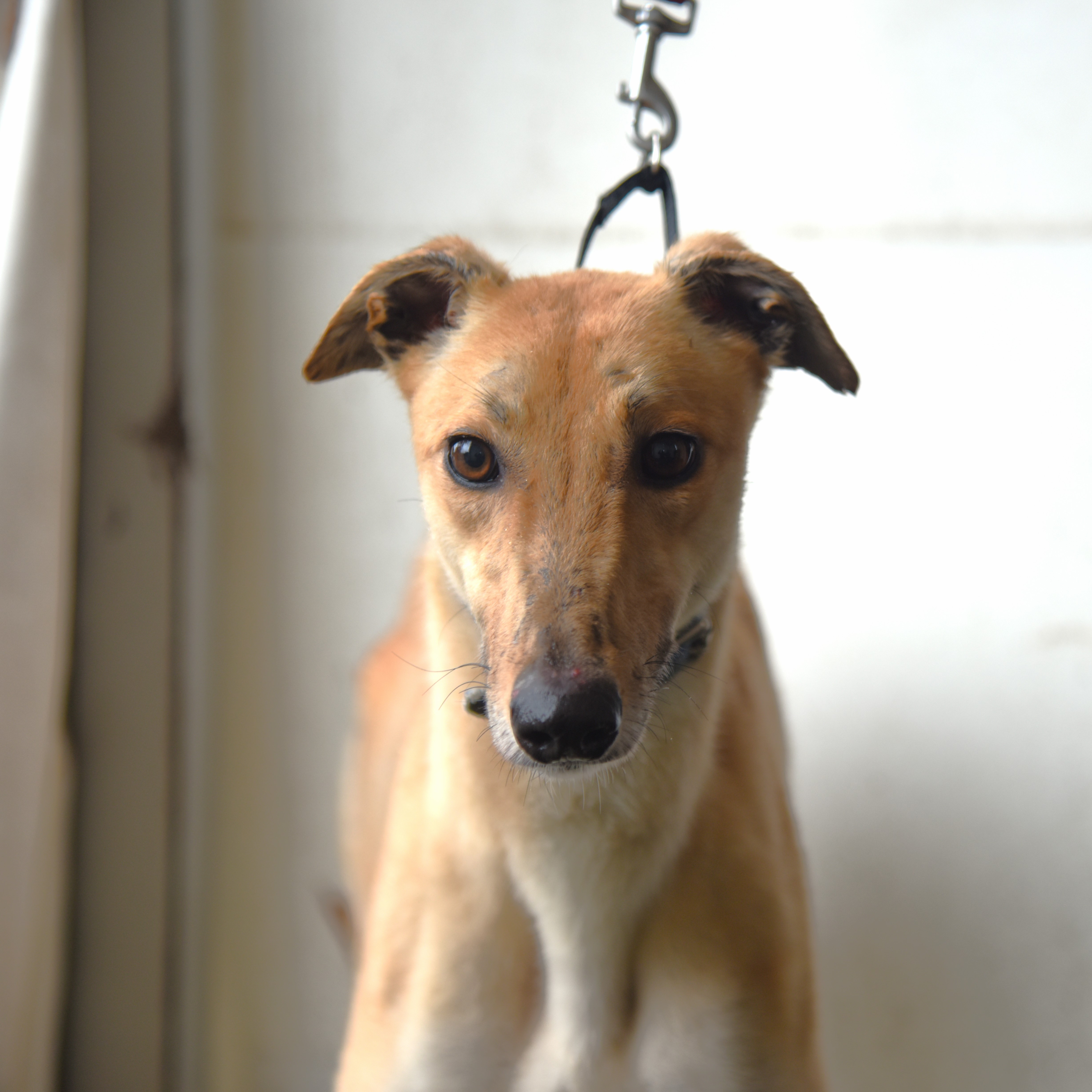
Shell
This sweet little girl is Shell, and she is one that will need to come out of her “shell” a little when she goes into her forever home. But she will blossom as a sweet, puppyish girl that is excitable and bubbly when she is comfortable. We think she may suit living as an only dog or with another medium to large male canine companion and somewhere







